COVID-19 and seasonal conditions may have put the freeze on Northern Nevada’s housing inventory, but warmer temps, vaccinations, and new construction could bring more homes on the market this spring.
The housing inventory in Reno and Sparks experienced a slight increase in February, and we may continue to see more homes come on the market as the temperatures get warmer. Overall, February was better than January, but we still have a long way to go. Here’s what you need to know.
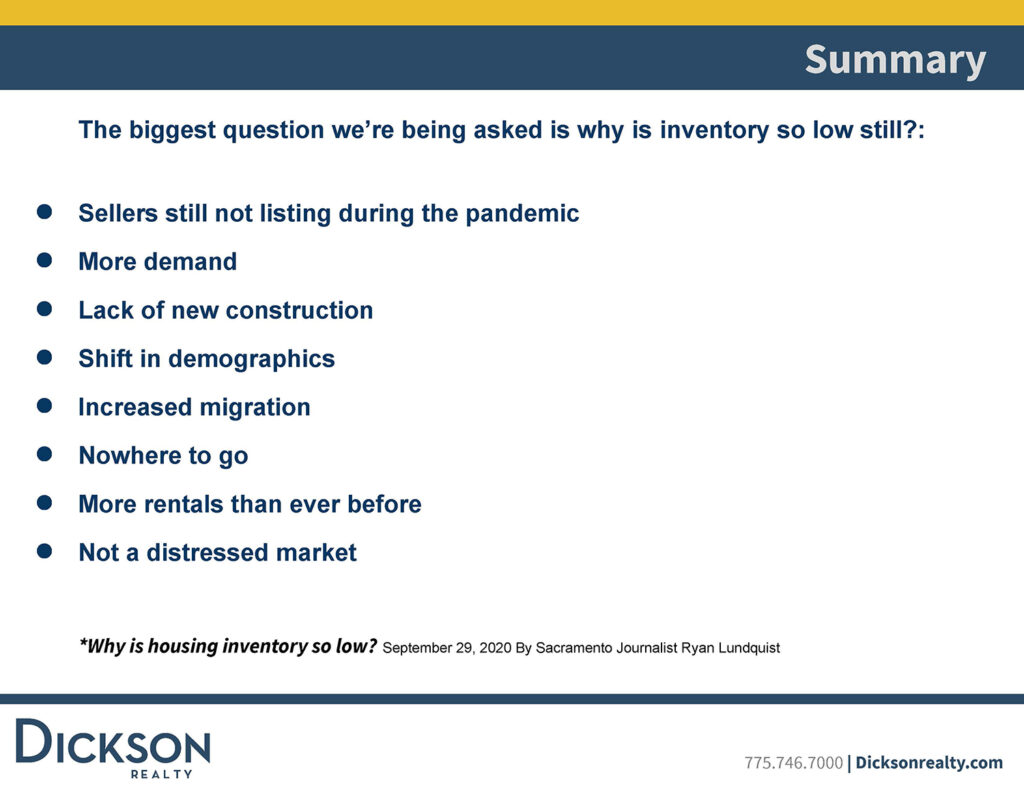
Northern Nevada’s Housing Inventory: Where Are All Houses?
Our housing market’s current state is due to a few factors, including high demand and low inventory. Like many other parts of the country, homeowners in Reno and Sparks are hesitant to list their homes due to the pandemic. According to Redfin data, the average person is spending more than 13 years in their home, which is a 62.5% increase from 2010. Many of these homeowners are finding housing prices too expensive and are intimidated by low inventory levels.
When homeowners stay in their homes longer, it creates a domino effect of short supply at lower price levels, leaving first-time homebuyers with fewer options.
These are some of the reasons why we are seeing only a few days worth of inventory left for homes priced less than $600,000. To understand the other factors influencing our demand-driven market, we must consider recent demographic and economic trends, such as more people moving to smaller cities, such as Reno and Sparks.
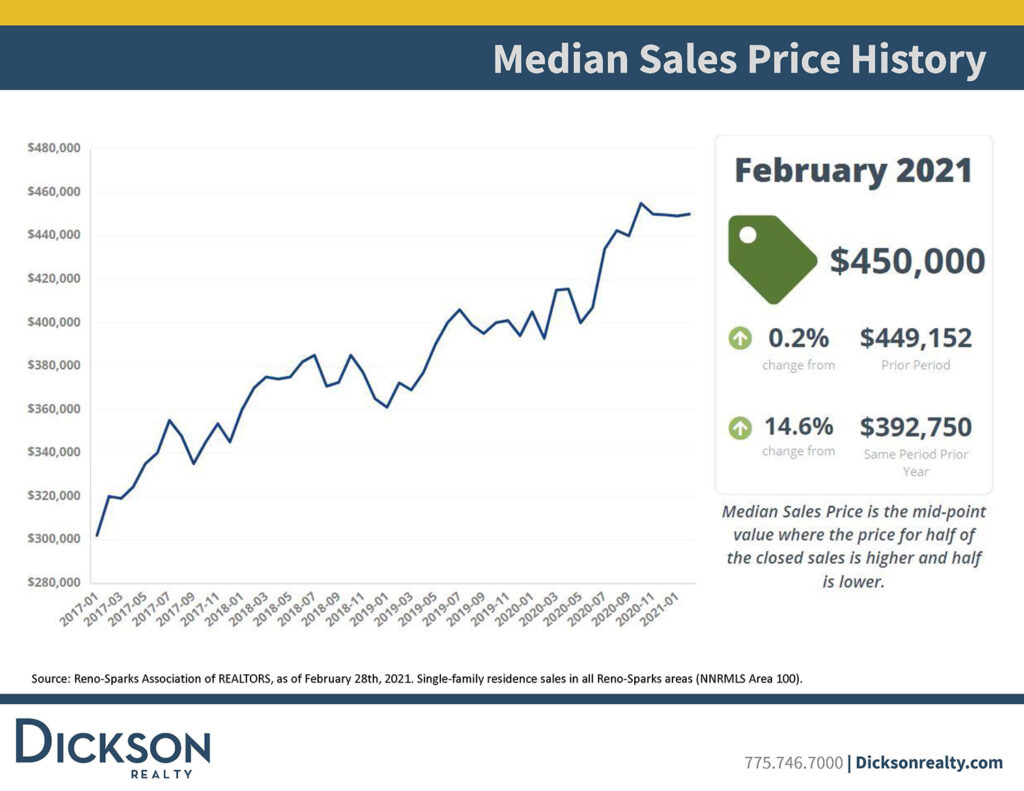
Prices On The Rise
In February 2021, the Reno-Sparks median sales price was listed at $450,000, representing a slight increase month-over-month. The median price for housing in Northern Nevada increased by 15% compared to February 2020. This reflects the growing demand for housing as more jobs and businesses relocate to the area. The median sold price-per-square-foot increased to $269 and is also up 20% from February 2020.
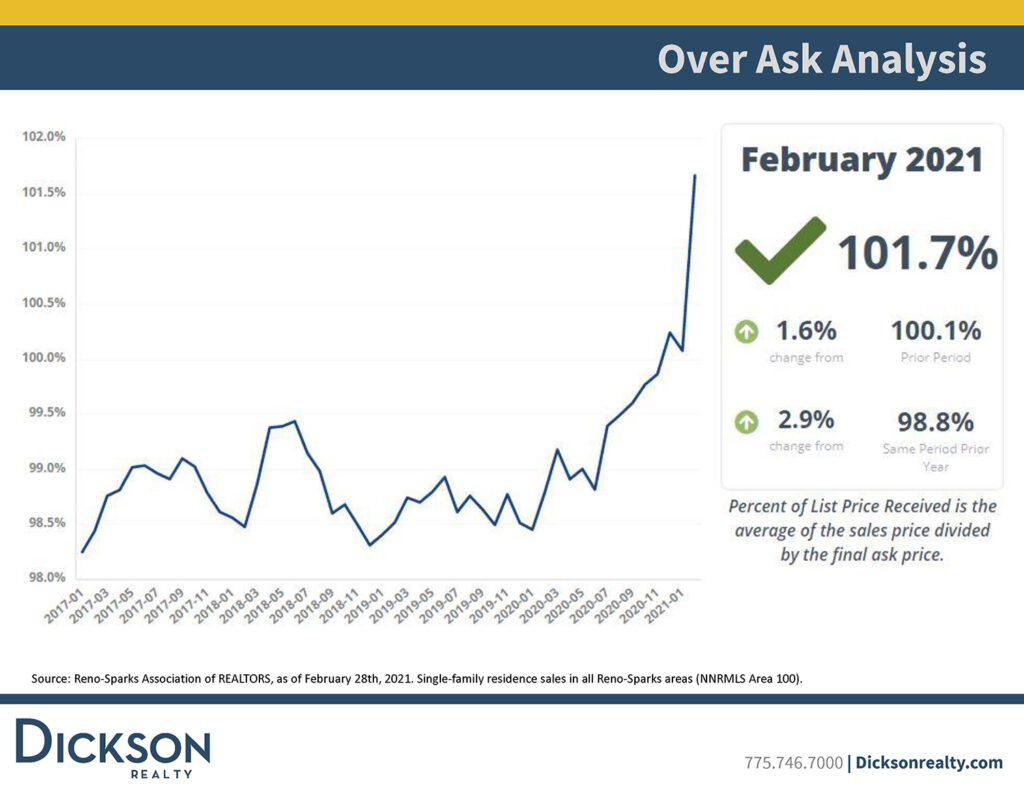
Homes Are Selling For More Than The Listed Price
More homes in the Northern Nevada housing market are selling for above the original listing price. To understand how many homes sold for more than the asking price and by what percentage, we calculate the average sales price divided by the final asking price to measure the increase. In February, the over asking price was 101.7%, which is a 1.6% increase month-over-month and a 2.9% increase year-over-year. These changes may sound small, but this graph shows a significant rise in over-ask offers from 2017 to 2021. Some homes are now selling at 105% to 107% above the asking price for Northern Nevada’s more sought-after areas.
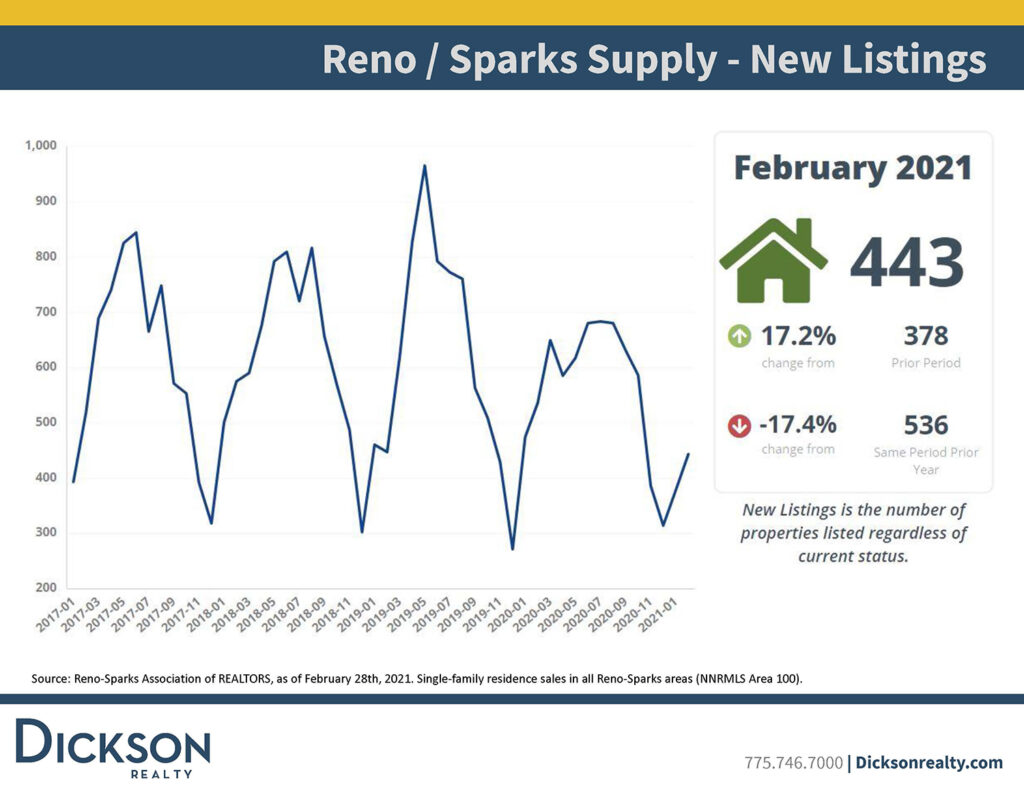
Housing Supply Increased Month-Over-Month
In February 2021, there were 443 new listings for Northern Nevada’s housing inventory, representing a 17% increase month-over-month. Although this provides some hope for the coming months, this number also shows a 17% decrease from February 2020. There are currently 174 homes available for sale in the Reno-Sparks area. We’re hopeful that seasonality, COVID-19 vaccinations (more on that in a bit), and new housing developments will continue to create more inventory in the future.
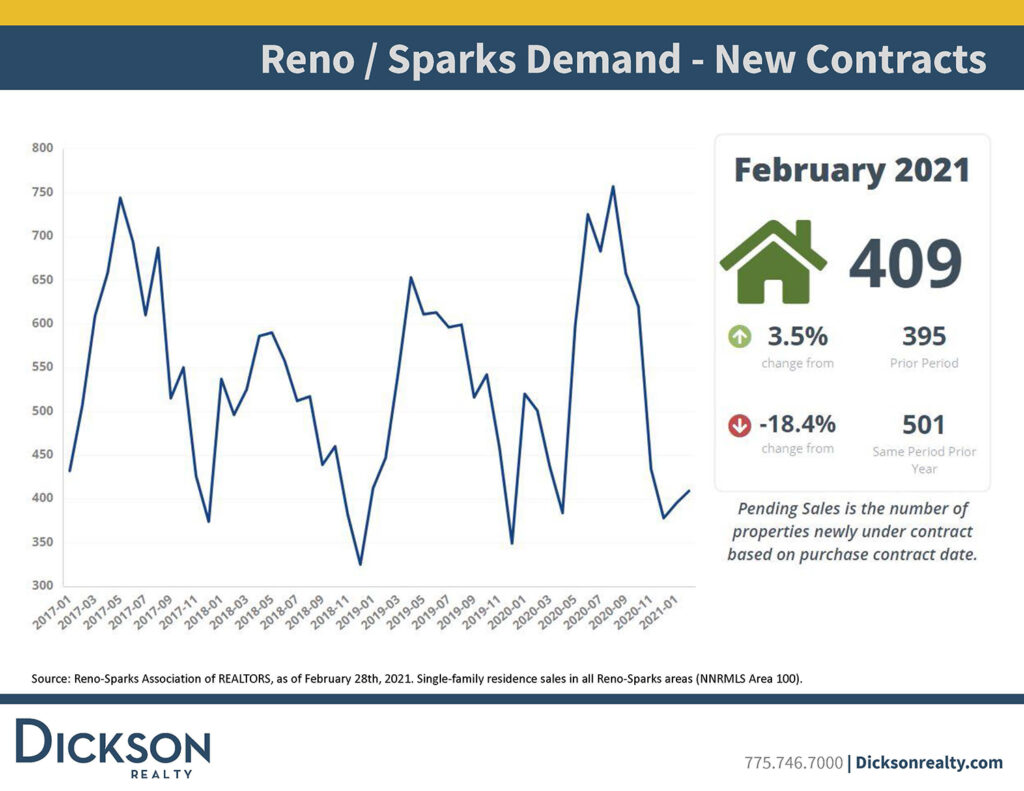
Demand Continues To Drive The Housing Market
To measure demand, we track the number of new homes that go into contract in a given month. In February 2021, there were 409 new contracts in the Reno and Sparks housing market, which is 3.5% more than January. However, this number shows an 18% decrease from February 2020.
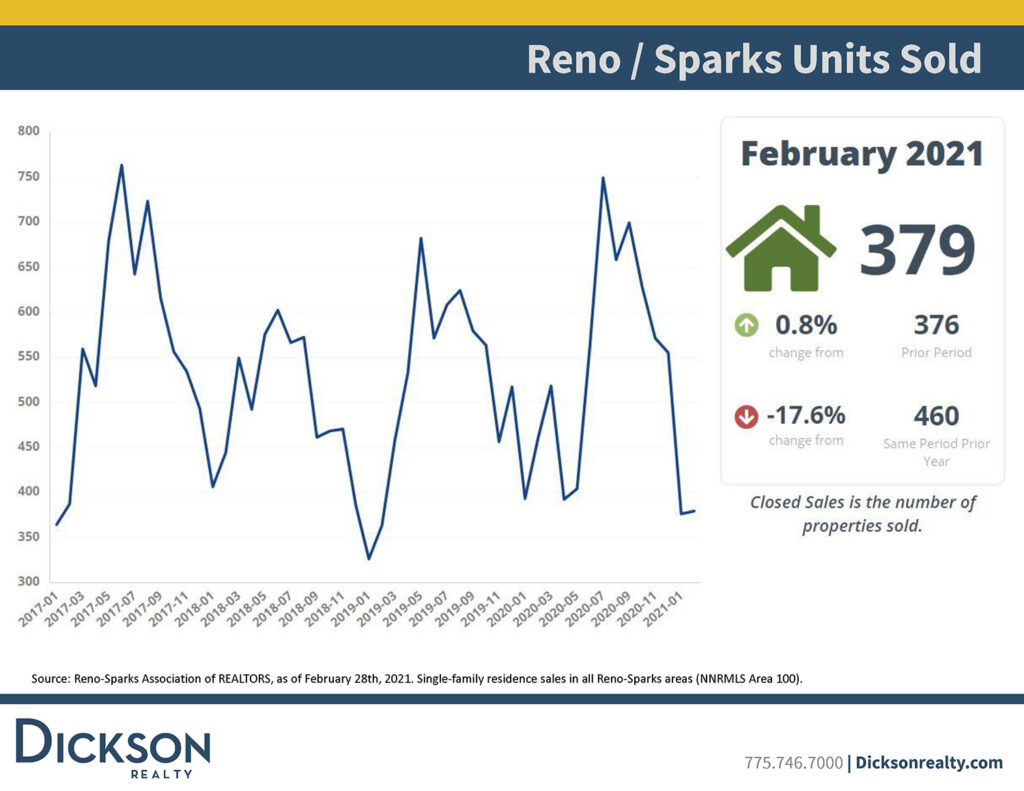
Housing Units Sold In Reno And Sparks
As Northern Nevada’s housing inventory remains low, so does the number of units sold. In February 2021, there were 379 homes—three more than January—representing a 17% decrease year-over-year and some of the lowest monthly sales numbers we’ve seen since 2019.
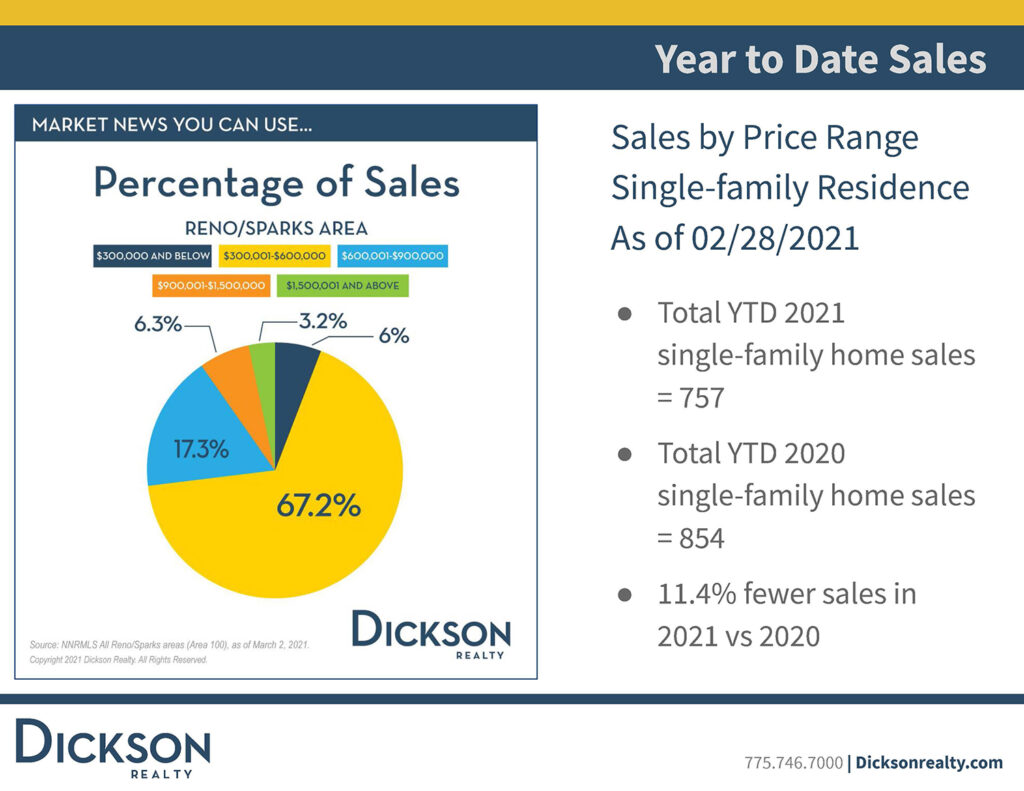
More Expensive Homes Available And Gaining Market Share
The region’s median housing price falls between $300,000 to $600,000, and this price range represents 67% of sales in the market. However, higher-priced homes are becoming a larger percentage of sales. In February 2021, single-family homes between $600,000 and $900,000 accounted for 17.3% of sales, a significant increase from February 2020.
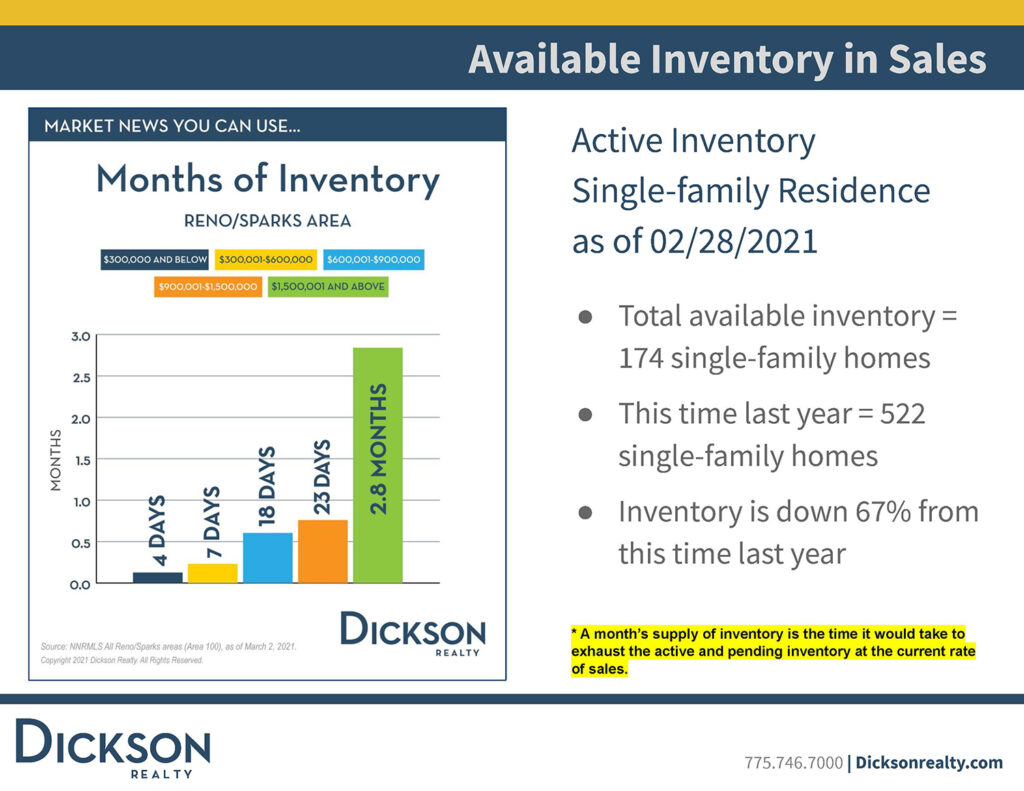
Available Inventory In The Housing Market
When we consider inventory levels in our housing market, we measure it by how much time it would take to exhaust the active and pending inventory at the current rate of sales. Typically, a five to six-month inventory is considered a healthy and balanced market.
We would generally measure inventory in months, but in February 2021, we had to measure in days for homes priced at less than $1.5 million. In February, there was four-days worth of inventory for homes priced at less than $300,000—a slight increase from the two days in January 2021. Homes priced at more than $1.5 million showed 2.8 months of inventory.
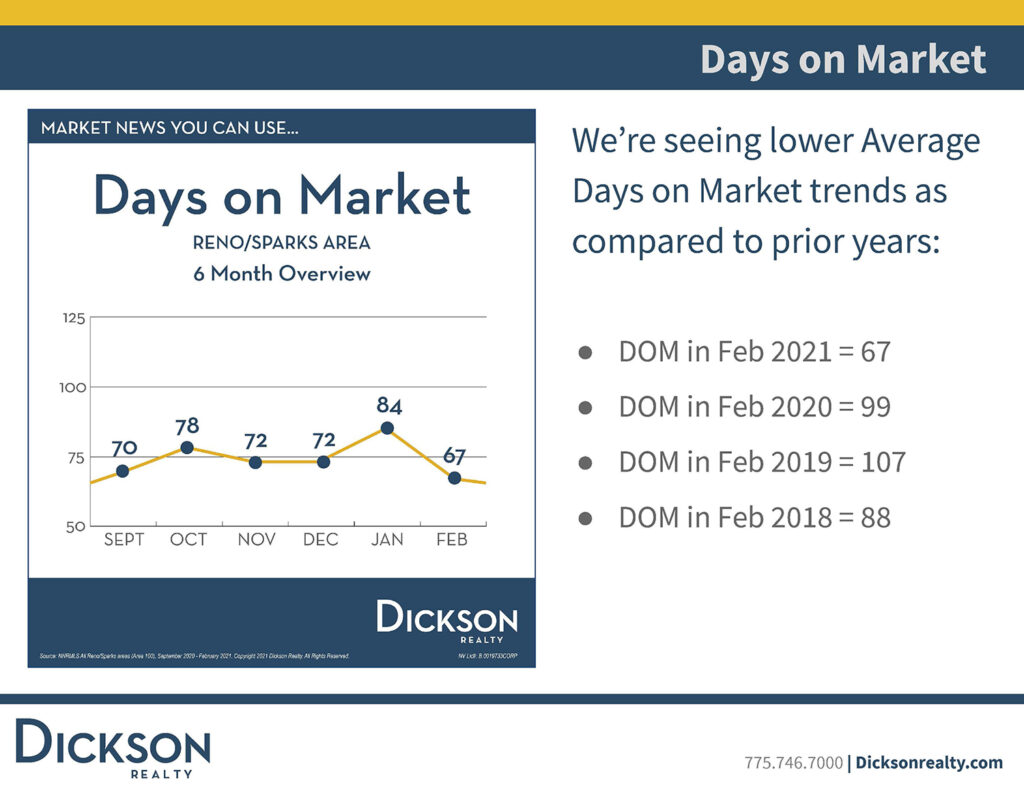
Days On Market Decreases
Many homes in the median market range are getting into contract and selling within 45 to 50 days. This is a great way to know how long it will take to sell a home. In February 2021, most homes sold within 67 days, which down from 99 days on market year-over-year. This is also a result of demand outpacing our housing supply, which gives sellers the upper hand.
Covid-19 Cases Down As Vaccines Become Available
For the past year, the global pandemic has impacted the local housing market. So, monitoring the number of cases is essential to understand how it may continue to affect our housing supply and demand.
At the beginning of 2021, Washoe County had more than 15,000 active COVID-19 cases. However, as vaccinations continue, we’re witnessing restrictions ease as cases decline. As of February, the region experienced fewer than 2,500 active cases. We are hopeful this number will continue to decrease as we approach the warmer spring and summer months and as vaccines become more widely available.
Hope Is On The Way?
While there’s still not enough inventory to meet the demand in the Reno/Sparks market, more homes are being built, and more existing homes could come on the market this spring. In February 2021, there were 5,494 apartment units under construction, which should provide more affordable housing opportunities in the coming months. These new units could also create more room for movement for buyers and sellers between different price ranges and neighborhoods. New housing developments are crucial to support the region’s growth.
Another way we could see more supply on the market is through an increase in listings for existing homes. As COVID-19 cases continue to decline in Washoe County, we’re hopeful sellers will start listing their homes. Combined with the typical uptick in the housing market that we see during warmer months, this could soon create slightly improved housing inventory conditions.



